The job of a gardener is to try to stop some plants taking over and to encourage the more delicate members of the population to flourish – that is the essence of gardening,” says garden designer James Alexander-Sinclair. Many of the plants he refers to as taking over tend to be self-seeders – plants that spread themselves far and wide, seeking out new spaces where they can thrive and conquer. It’s not all bad, though. Many such plants are beautiful, excellent for pollinators, and can give a naturalistic – and naturally dynamic – edge to a space. That was what James wanted for the garden of this single-storey barn conversion just outside Tetbury in the Cotswolds. “It’s an agricultural building, sitting within proper agricultural land that is constantly changing – from wheat to oilseed rape to ploughed earth,” he says. “I wanted to do something that worked within that landscape and didn’t jar against it.”
In brief
What Meadow-inspired planting in an accessible garden. Where Gloucestershire. Size Quarter of an acre. Soil Thin, stony Cotswold brash. Climate Temperate with strong winds and cold winters. Hardiness zone USDA 8.
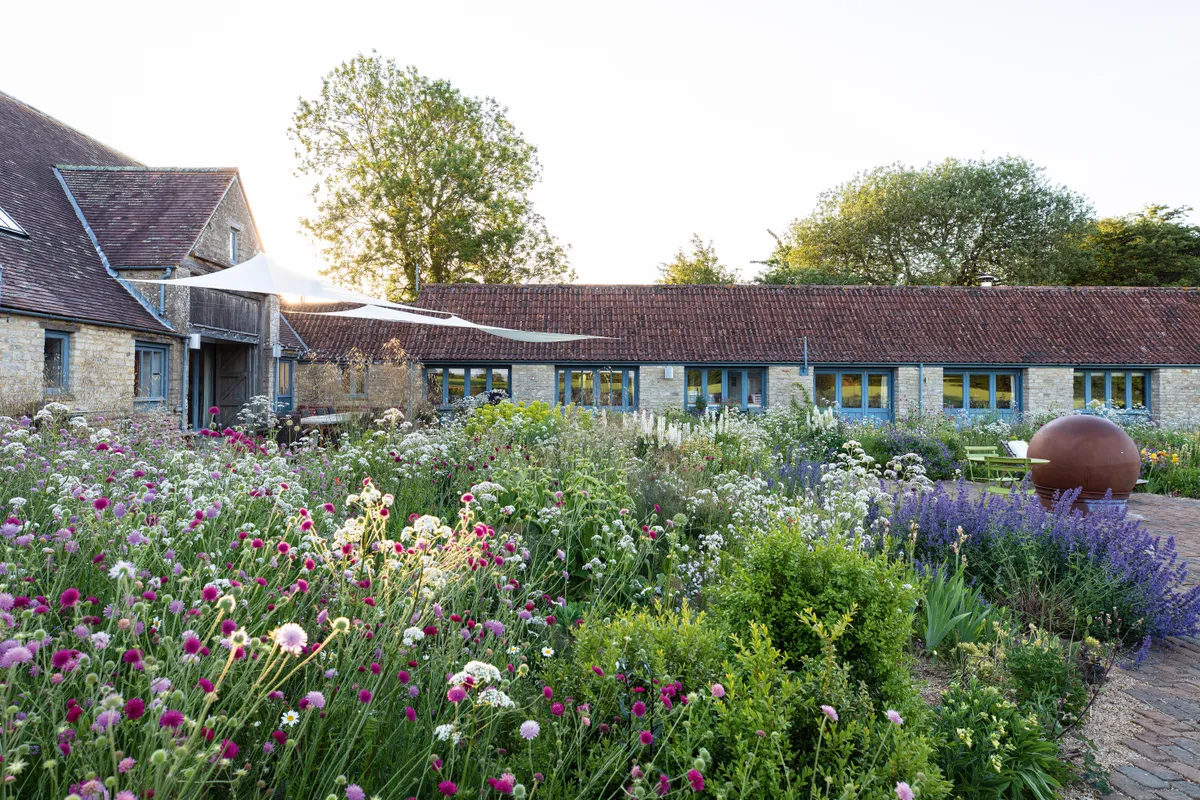
New Beginnings
Before James’s arrival, the owners had tried to make a wildflower meadow in the space that had become, as many such projects do, little more than a patch of weeds. “The idea was good, though,”says James. “The soil was pretty scratchy – stony and rocky, which wildflowers are not averse to – and that romantic, floaty feel of a meadow sat well with the space.” James’s plan was to achieve a similar effect using plants with a longer season of interest – particularly important as the owner is highly sociable and enjoys entertaining. “If lots of people are going to come and see it, you want to make sure it looks good for as long as possible,” says James.
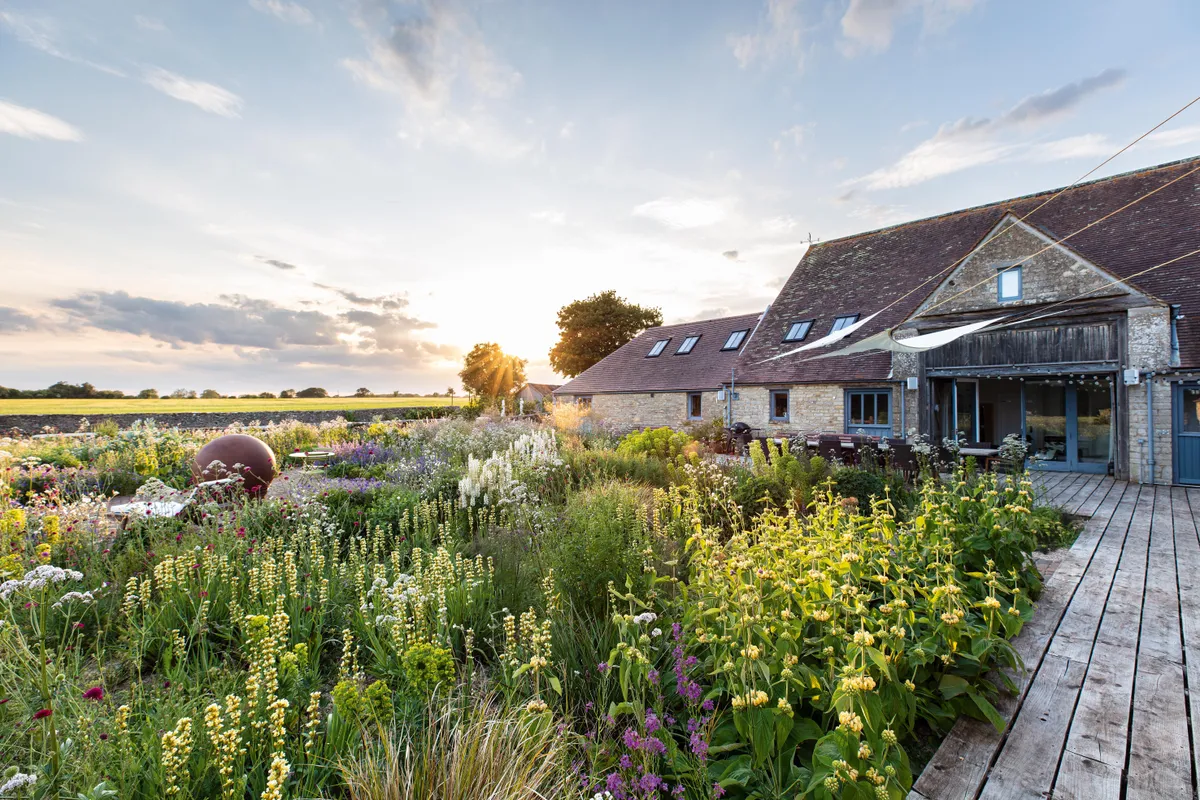
Planting Plan
James divided the space into planting beds with a simple, paved roundel at the centre and a network of radiating paths wide enough to accommodate the owner’s wheelchair. He then drew up a list of plants he knew could cope with the conditions and, in his words, “scattered them about the place in a fairly random way. I don’t do planting plans as they take a lot of time and then I always change my mind when I’m on site anyway,” he laughs. “I prefer to work on the basis that if something is in the wrong place, we’ll move it.”
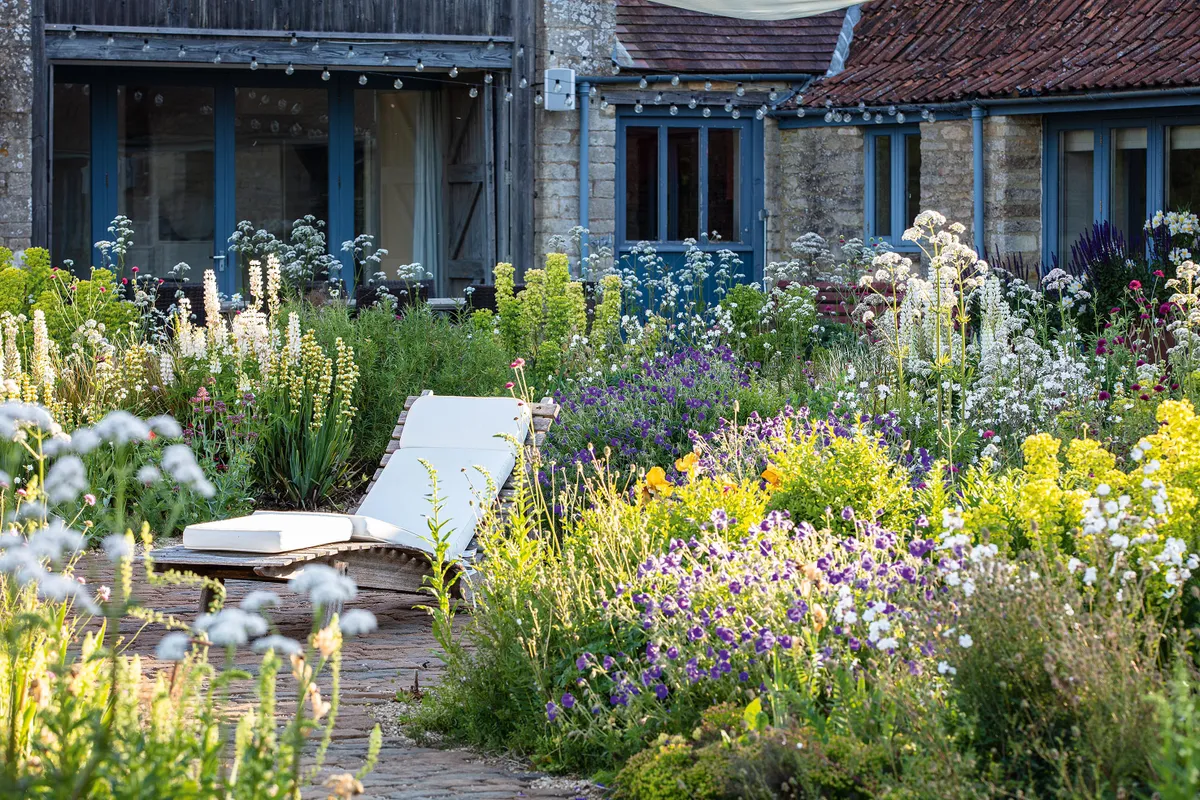
Planting was a tough job. To avoid disturbing dormant seeds in the soil, the landscapers chose not to dig the area and used pickaxes to break the ground instead. Once the plants were in, an extra layer of gravel was added to retain moisture (the garden is never watered, which also encourages stockier, sturdier plants) and to suppress weeds. Even so, in the first couple of years after planting, weeding was a constant. “The area had previously been filled with wildflowers and wildflowers in the wrong place become weeds,” says James.
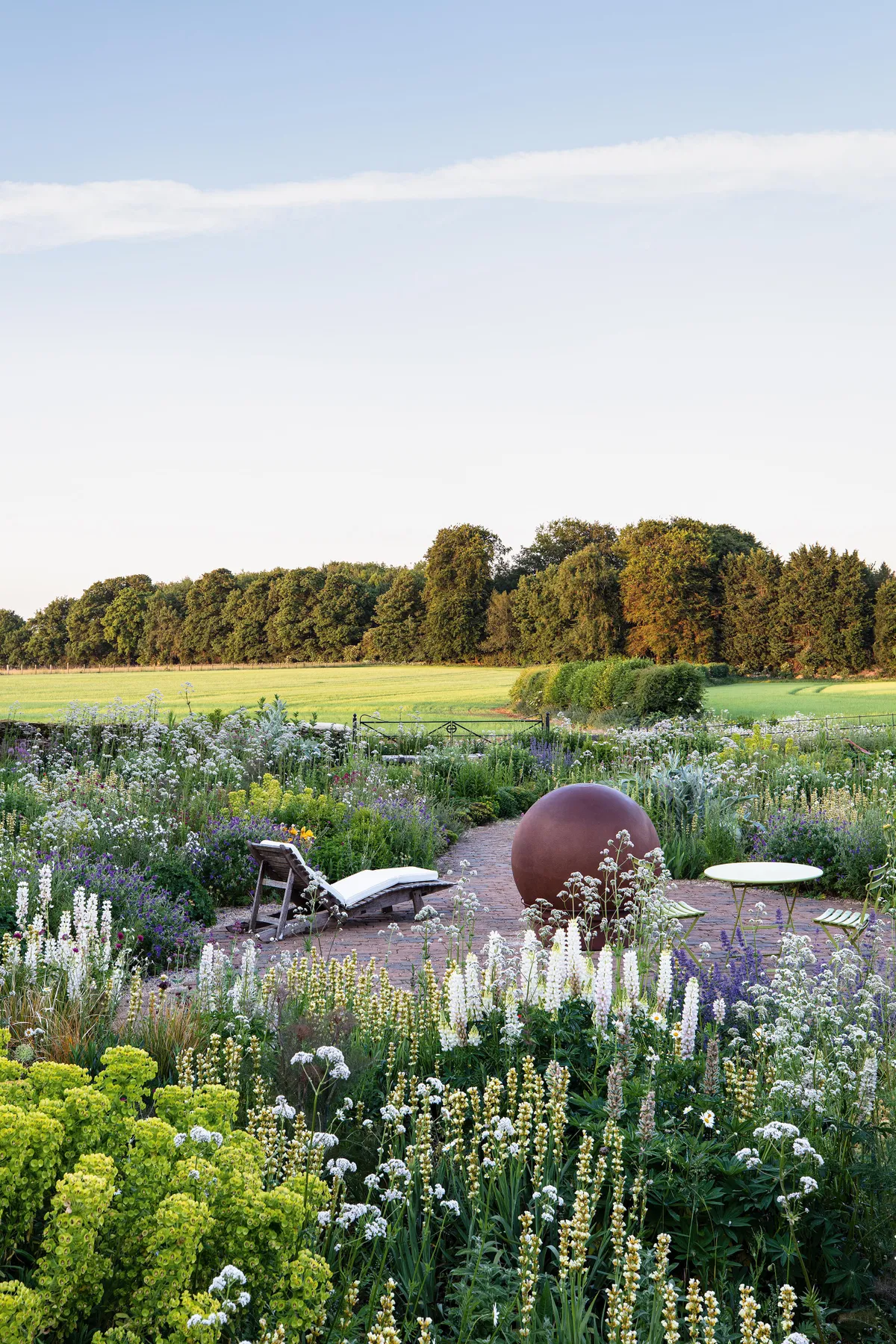
Now, though judicious editing is still required (a gardener comes once a week), the garden has found its level, and after the crocuses, Iris reticulata and tulips of spring, it erupts into a stunning, summertime climax with rivers of Sisyrinchium striatum and lupins flowing through clumps of Anemanthele lessoniana, euphorbia and Phlomis russeliana. Crocosmias, eryngiums, Kniphofia rooperi and salvias continue the display, with cardoons, shaggy tuffets of box and the phlomis and grasses ensuring winter interest.
Adding Romance
To balance the rather upright nature of many of the plants, James has also included a good number with frothier, more delicate flowers, such as bronze fennel (Foeniculum vulgare ‘Purpureum’), valerian and centranthus. “They give that hazy romanticism, which is what you need in a garden like this,” he says, “even if you swear at them sometimes as they try to take over the world. They do need to be slapped back every so often.”
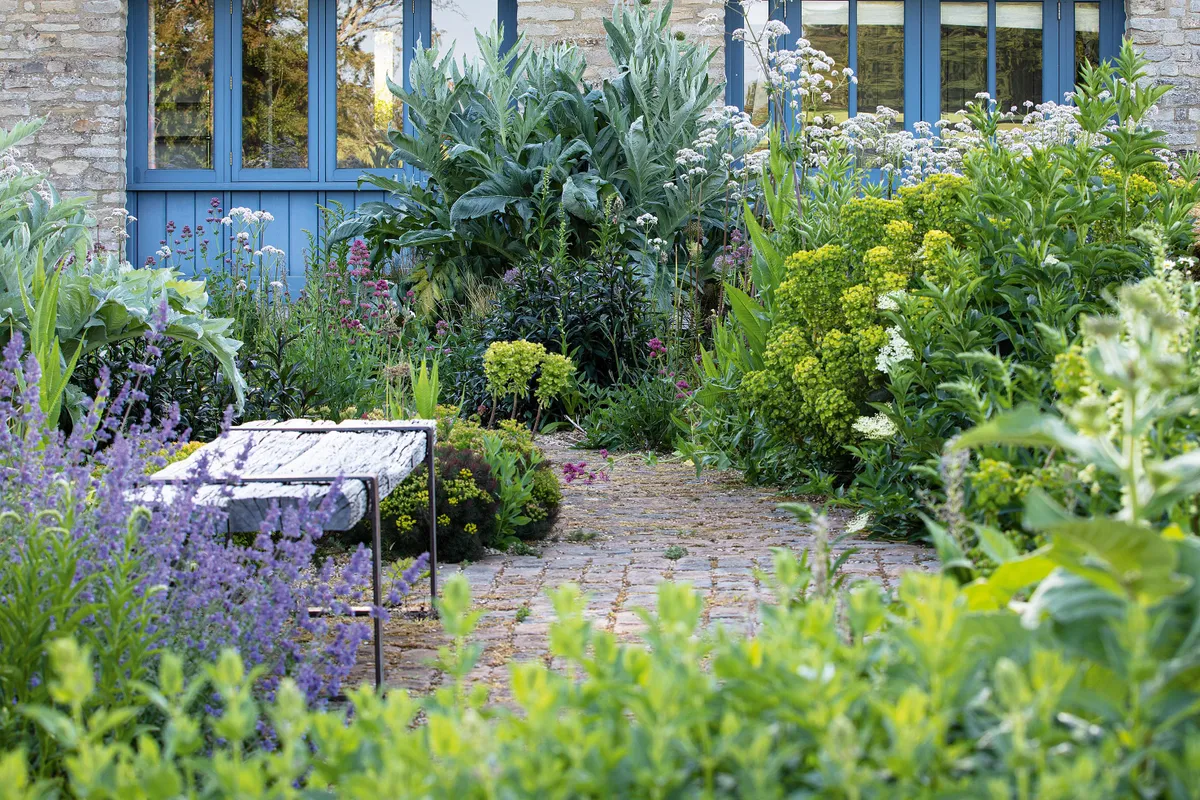
Just as the plants travel and move, so James has embraced the idea of inconstancy in other aspects of the garden. The central sculptural sphere, which looks like metal, is in fact fibreglass, and can easily be shifted to another spot. “The idea is that nothing is sacred,” he says. “Everything can be changed.”
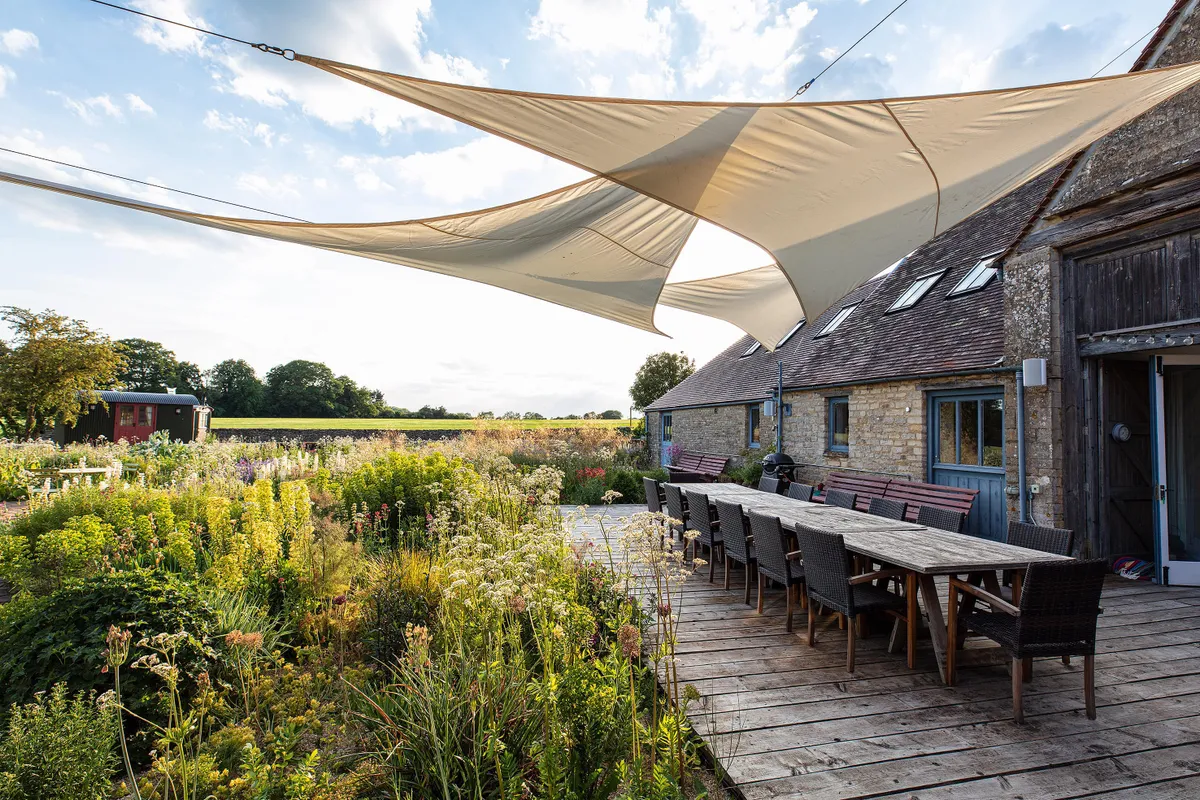
For the owner, the garden provides a different sense of freedom. The taller plants allow him to slip away and hide – a rare possibility in a wheelchair – and the unexpected beauty of the garden, which ambushes you as you come through the house, makes this a place where people want to be. “When you’re in a wheelchair it’s much easier for people to come to you than for you to go to them,” he says, “so you’re trying to create an environment which enables that. People feel they’re
in a special place here; it touches them.”
12 key plants
Stipa gigantea
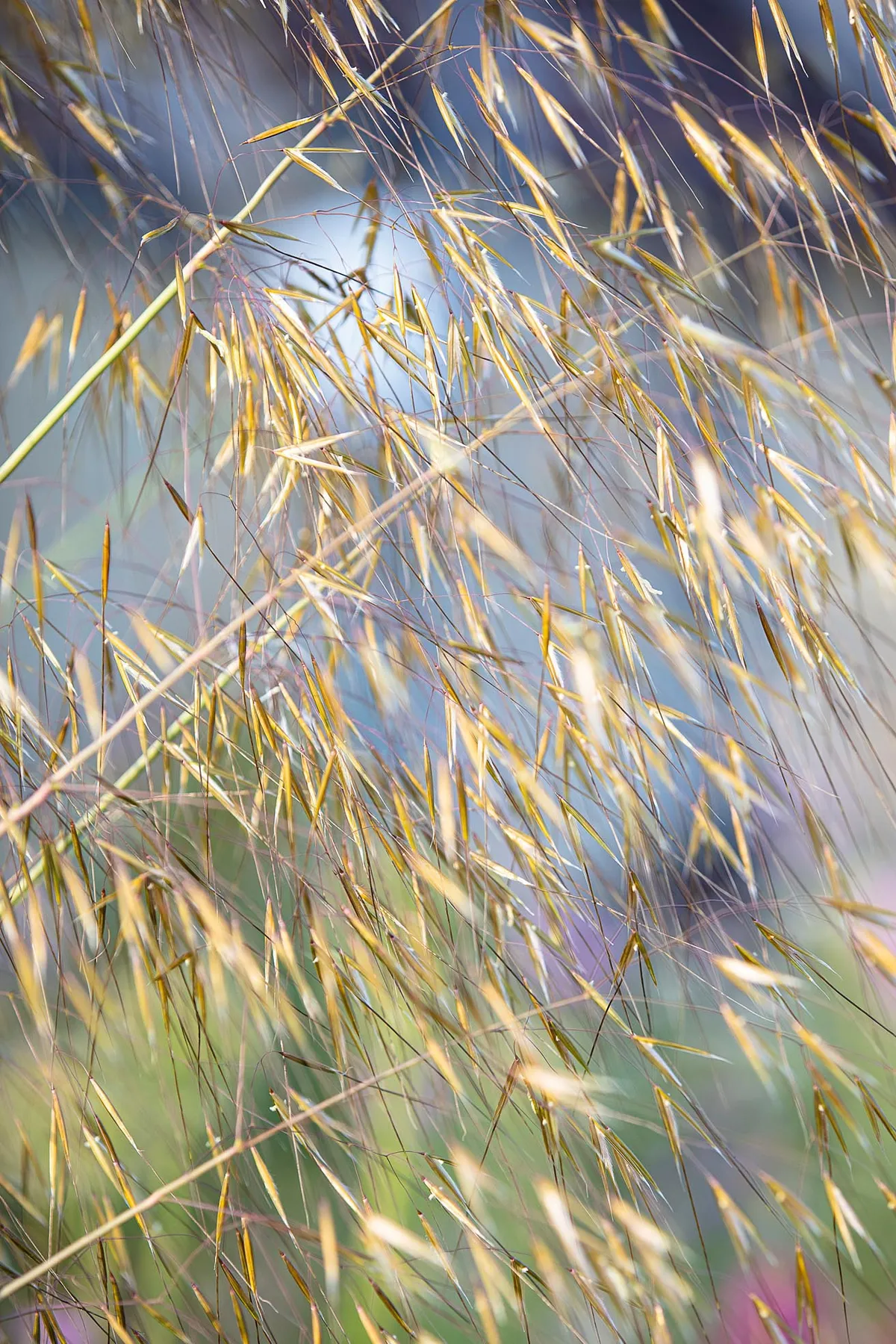
Always bigger than you expect it to be, this grass needs space to spread and show itself off properly. It catches the light beautifully and is evergreen, too. 2.5m. AGM*. RHS H4†.
Phlomis russeliana
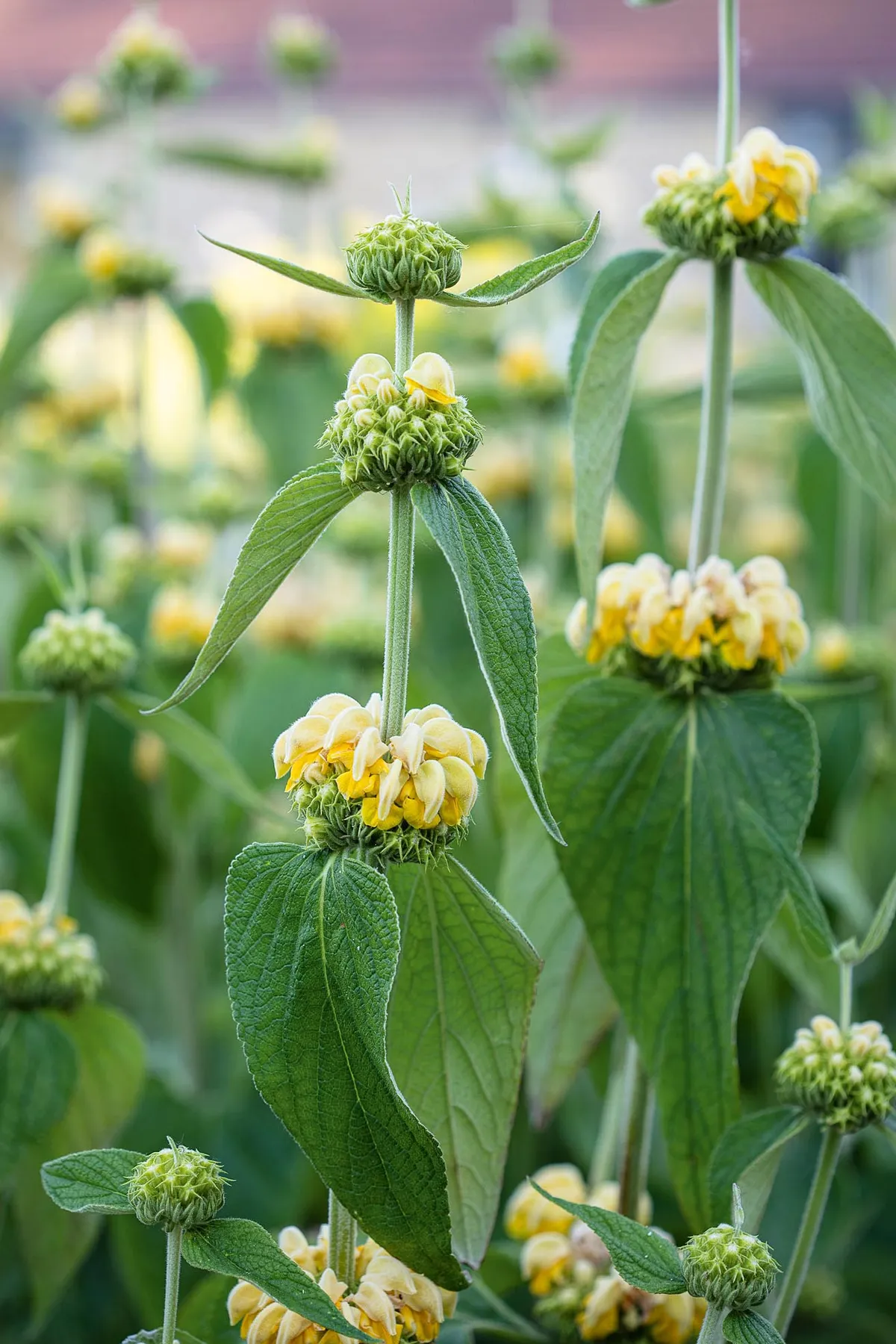
An ever-reliable plant that will flower in sun or shade and which looks solid and defiant even in the depths of winter. 90cm. AGM. RHS H6, USDA 5a-9b.
Salvia nemorosa ‘Amethyst’
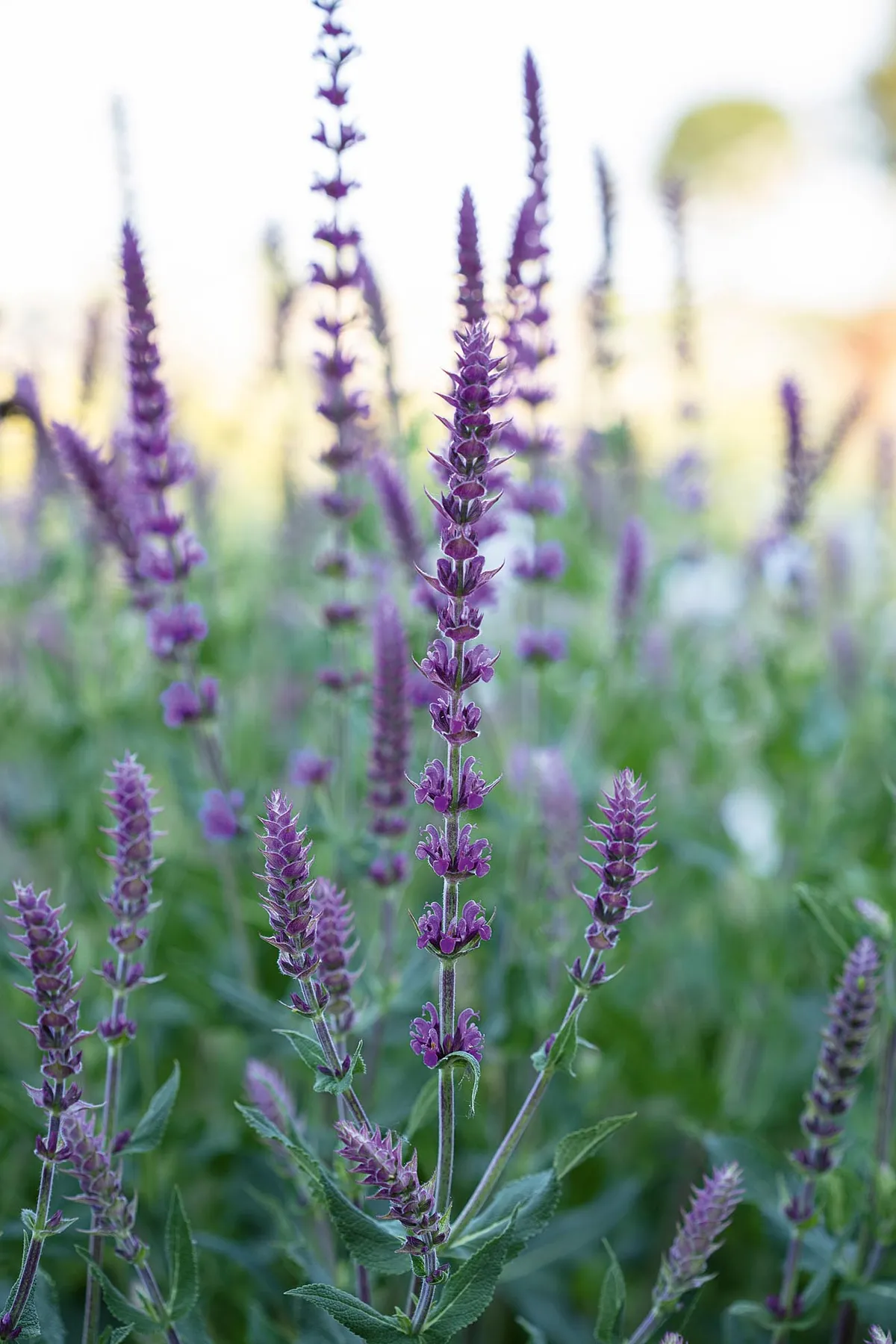
Salvias are so useful flowering for months and needing little attention apart from a chop in midsummer if they’re too leggy. This forms a good, upright clump. 60cm. AGM. RHS H7.
Cynara cardunculus
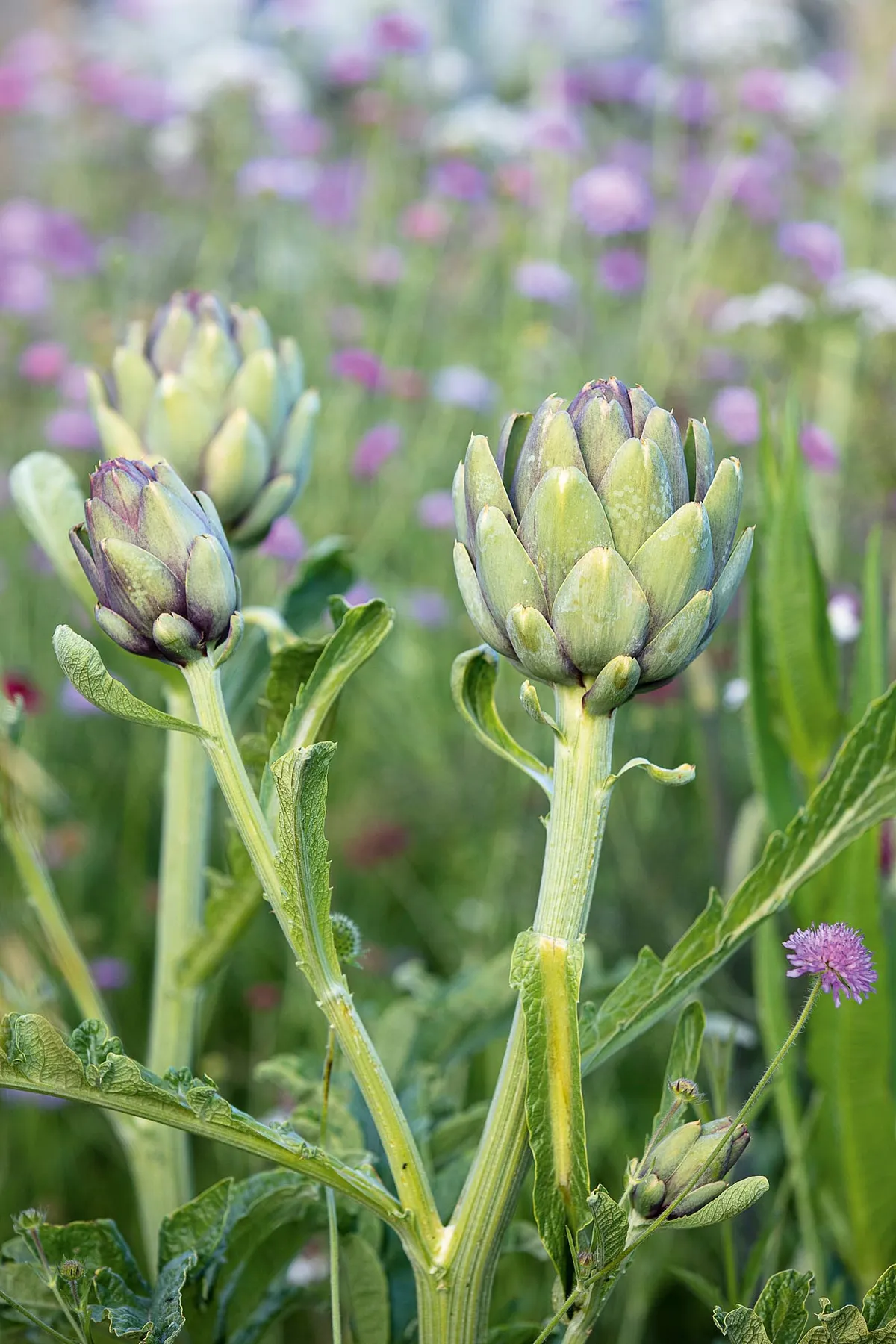
The majestic, silvery leaves look good all year, but do remember to stake the flowerheads, which are very heavy. An excellent plant for bees. 2.5m. AGM. RHS H5, USDA 7a-9b.
Penstemon ‘Garnet’
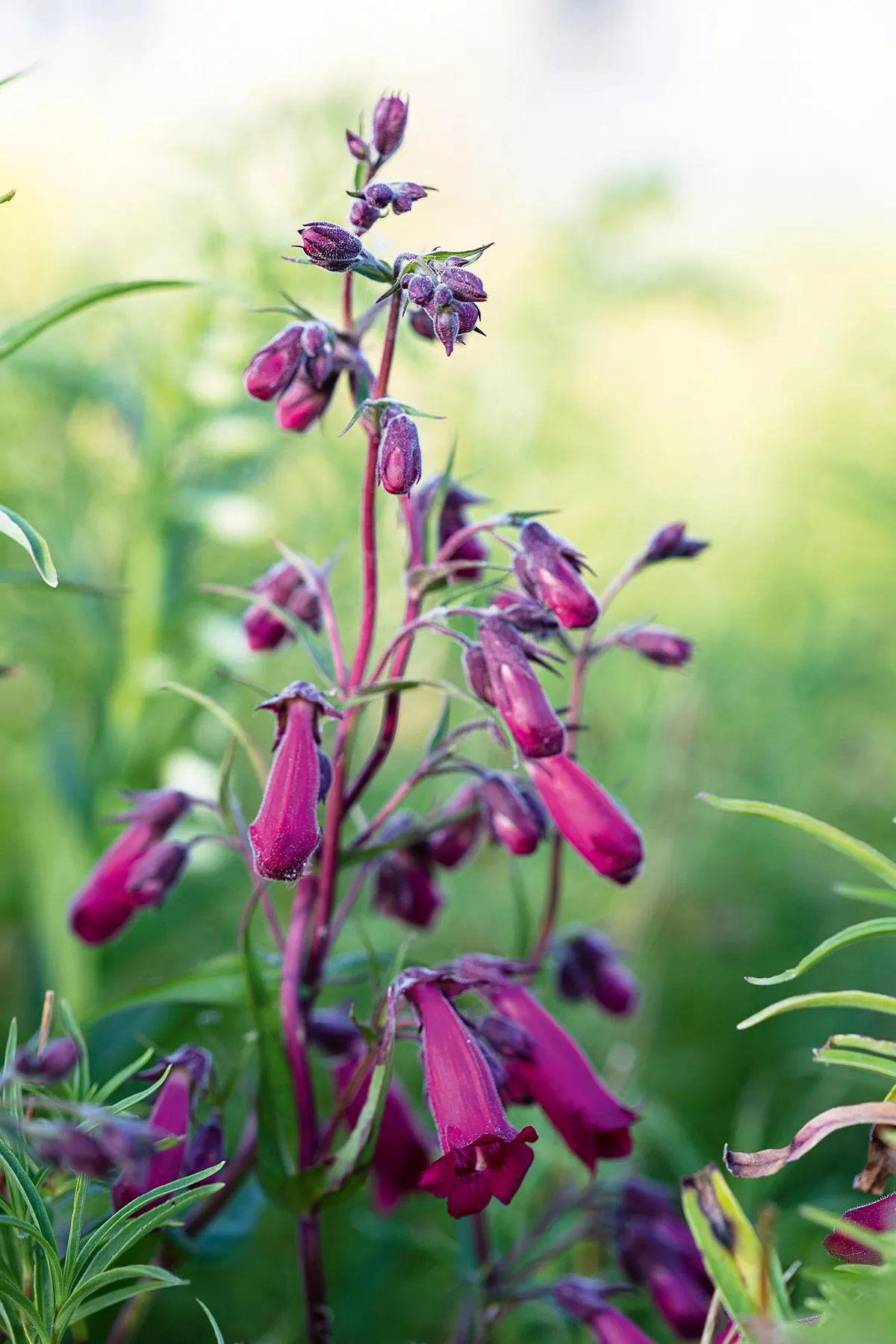
Dark, evergreen foliage and deep-red, tubular flowers that go on forever make this a stalwart of the border. Easy to grow from cuttings and trouble-free. 80cm. RHS H5.
Lupinus ‘Noble Maiden’
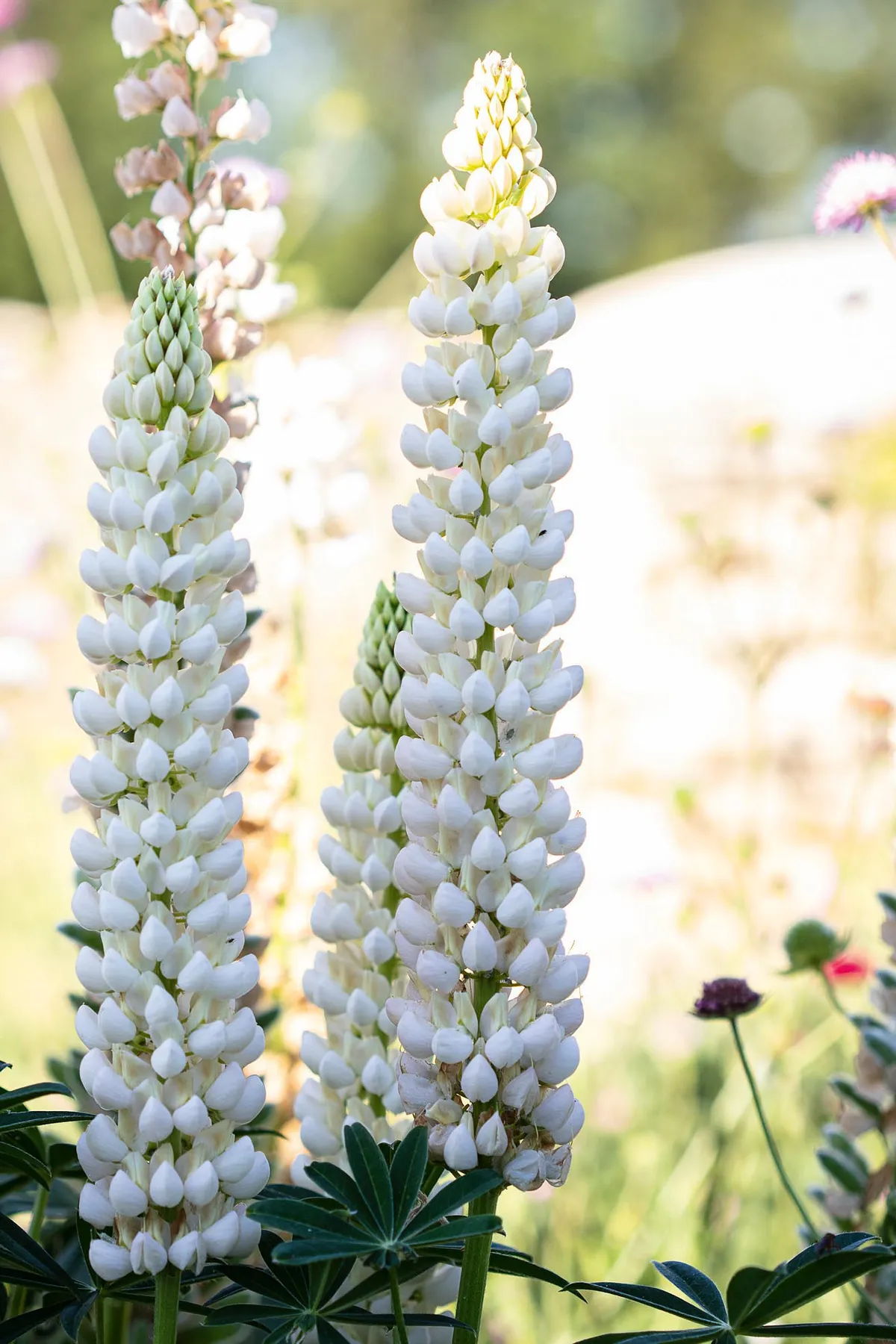
A classic, cottage-garden plant that is worth sticking with, despite it being messy in death. Taller plants around it can help detract from the unsightly scene. 90cm. RHS H5.
Euphorbia cyparissias ‘Fens Ruby’
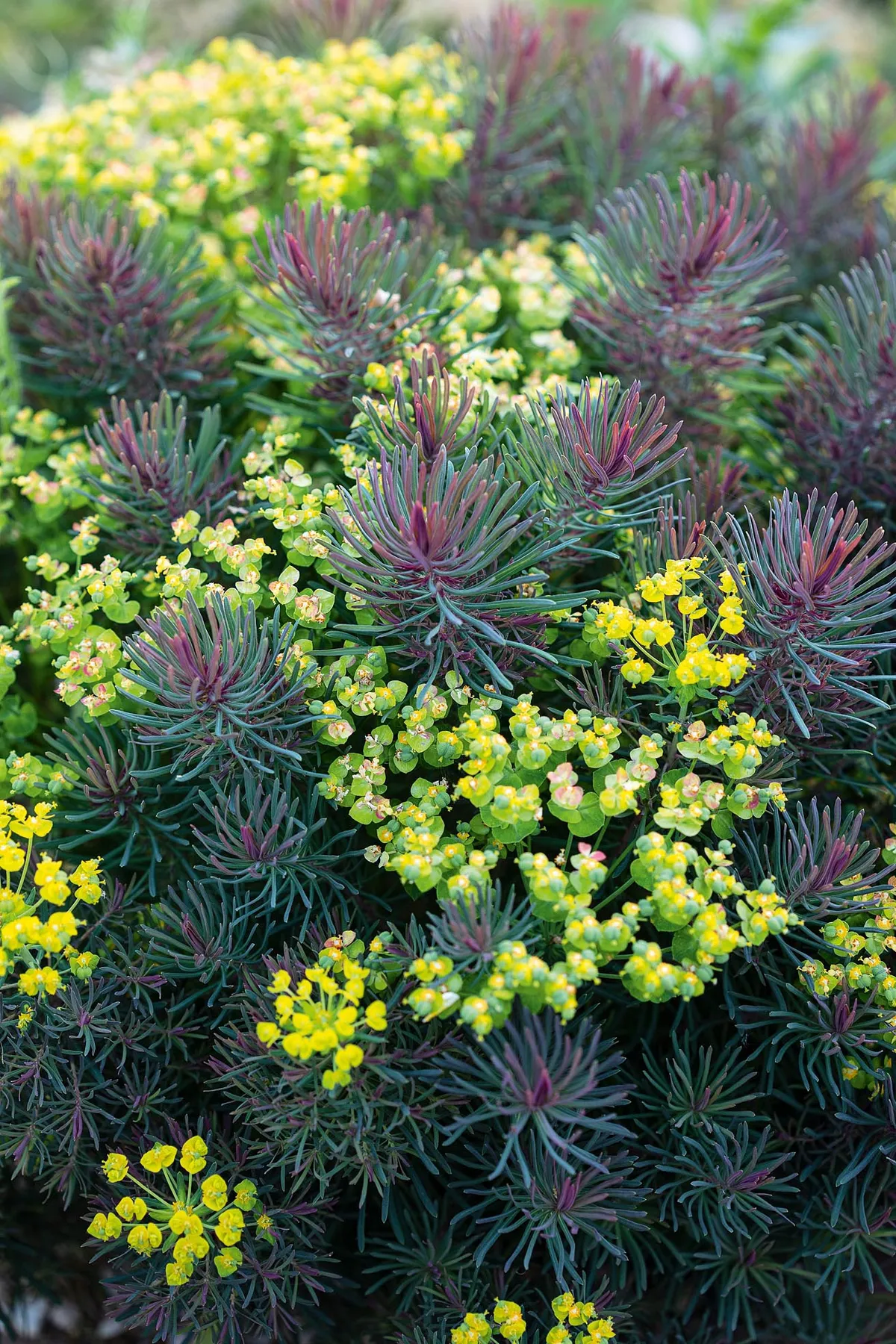
Used throughout the garden to soften the paths, this spurge has the most wonderful colour contrast between its lime-green flowers and glaucous, wine-tinged leaves. 30cm. RHS H7.
Centranthus ruber var. coccineus
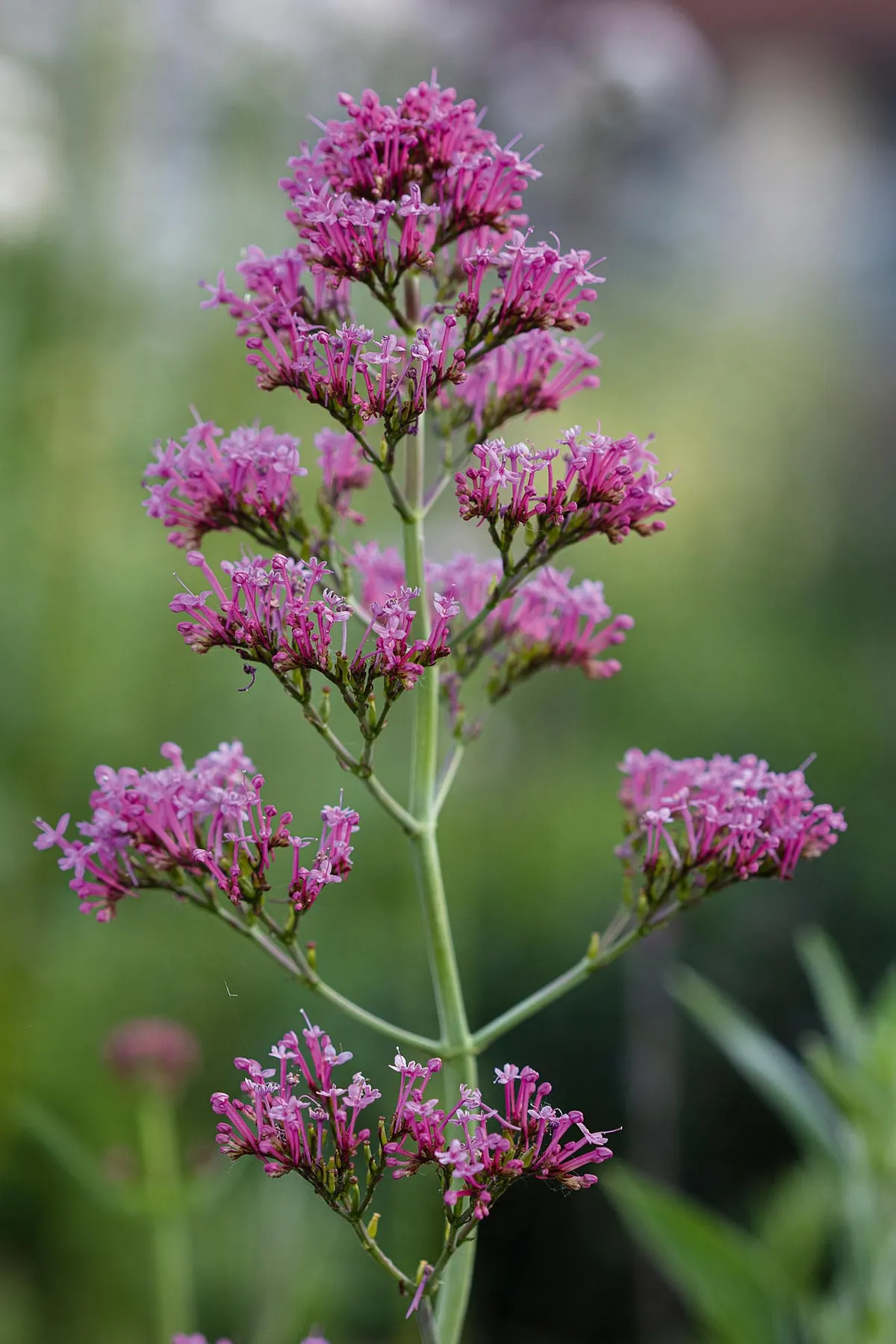
Too tall to use as an edging plant, so place this a little further back where it can peep out over its neighbours’ heads – though watch it doesn’t swamp them. 80cm. RHS H5, USDA 5a-8b.
Knautia macedonica
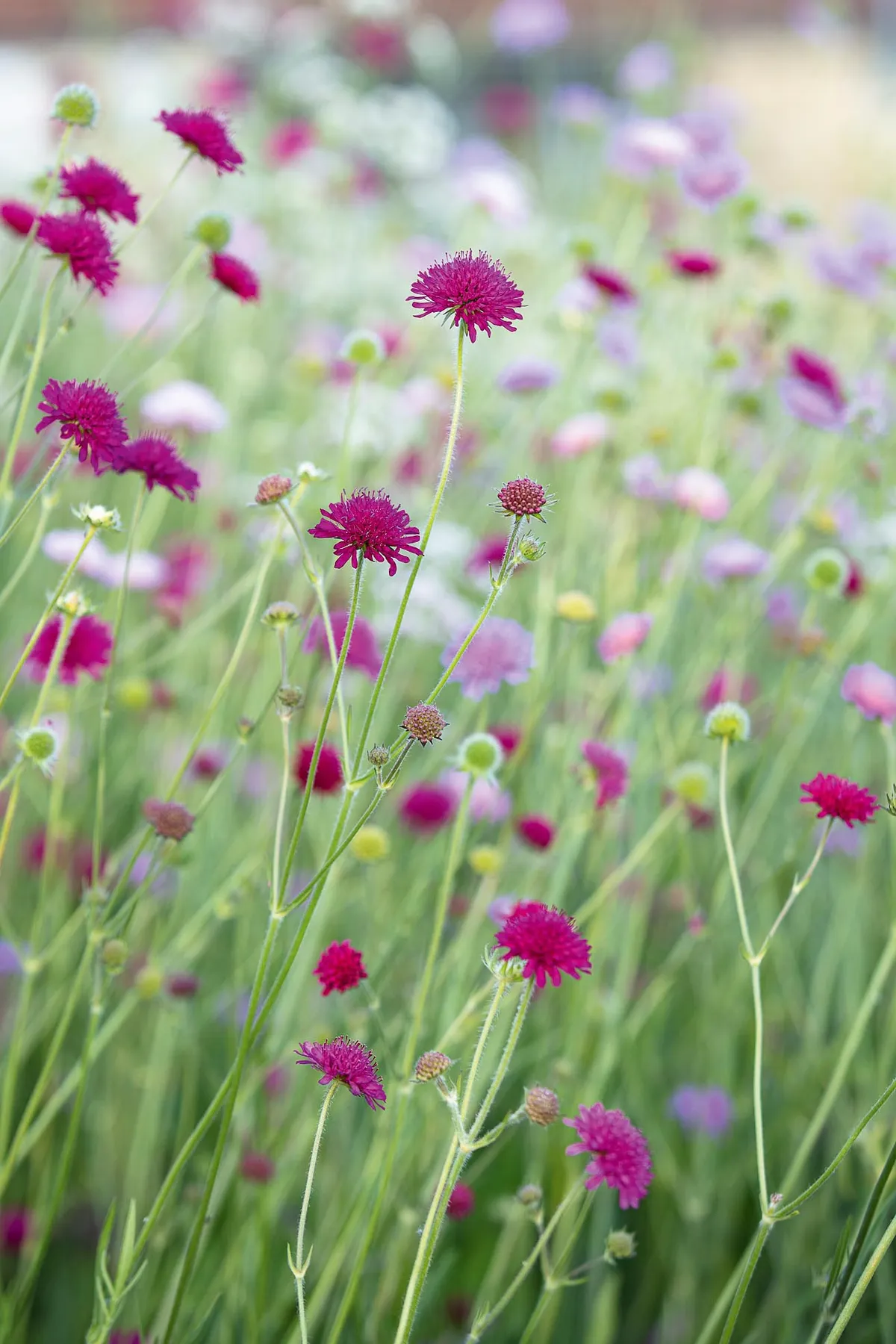
Rich-crimson buttons floating on thin, wiry stems make this an irresistible addition to the plantings here. It can flop with age, so cut it back in midsummer. 75cm. RHS H7, USDA 5a-9b.
Foeniculum vulgare ‘Purpureum’
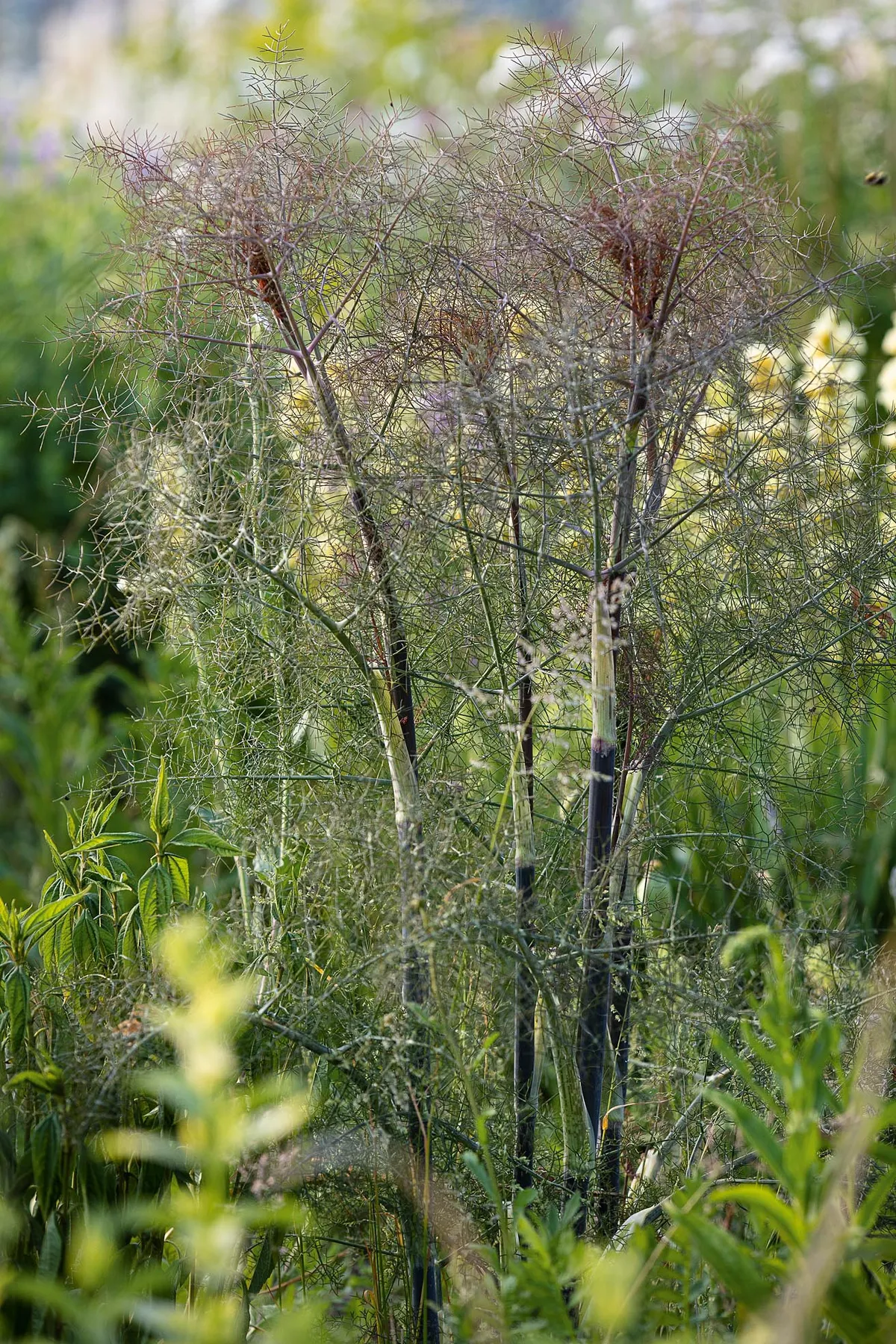
The umbelliferous flowers work well in semi-wild plantings and are a good contrast to spikier, more upright silhouettes. Edible leaves and seeds are a bonus. 1.8m. RHS H5, USDA 4a-9b.
Allium siculum
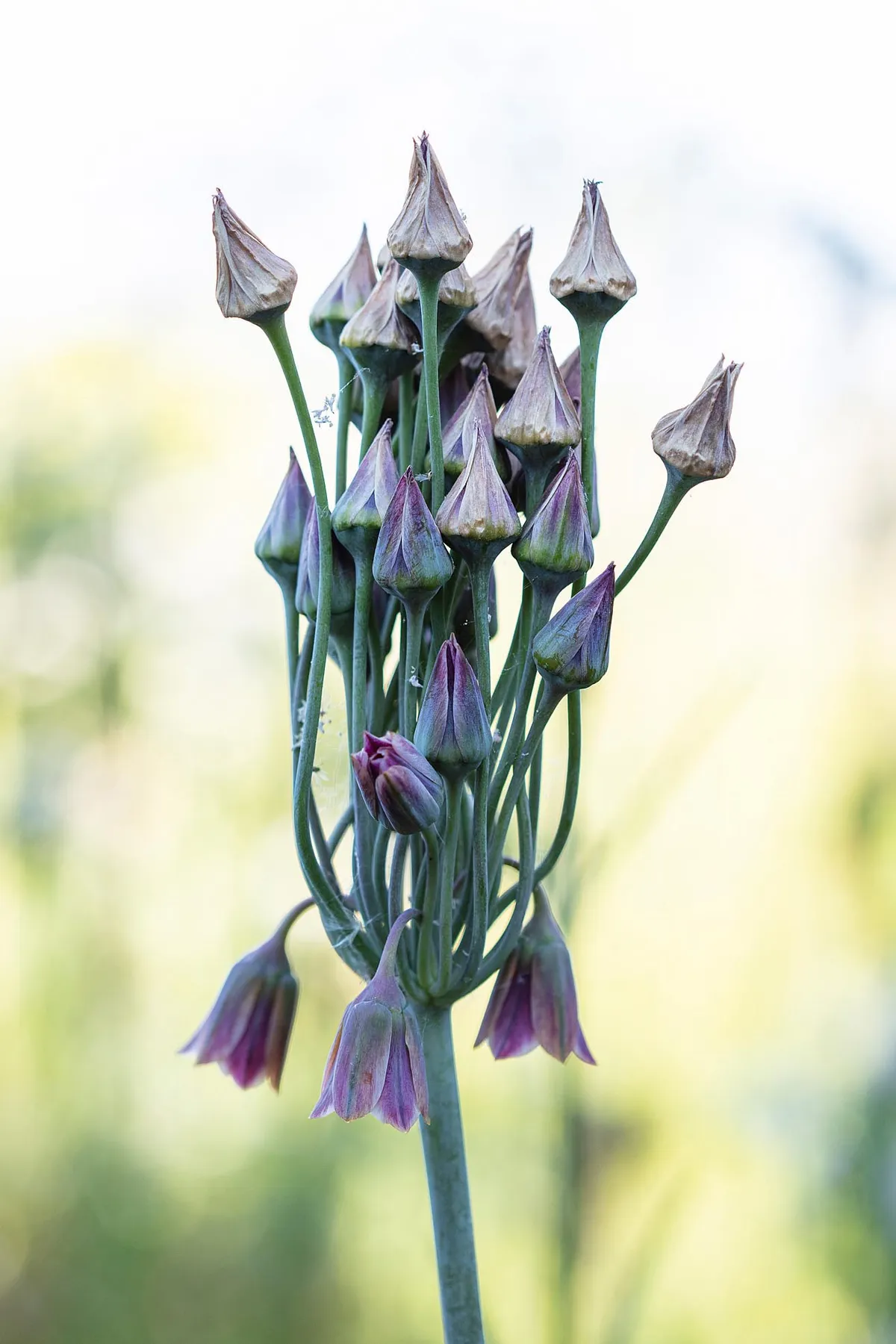
From the paper-wrapped buds to their explosion of flowers, to their upright-turning, shuttlecock-like seedheads, this plant is fascinating in all its stages. 1.2m. RHS H5.
Silene latifolia
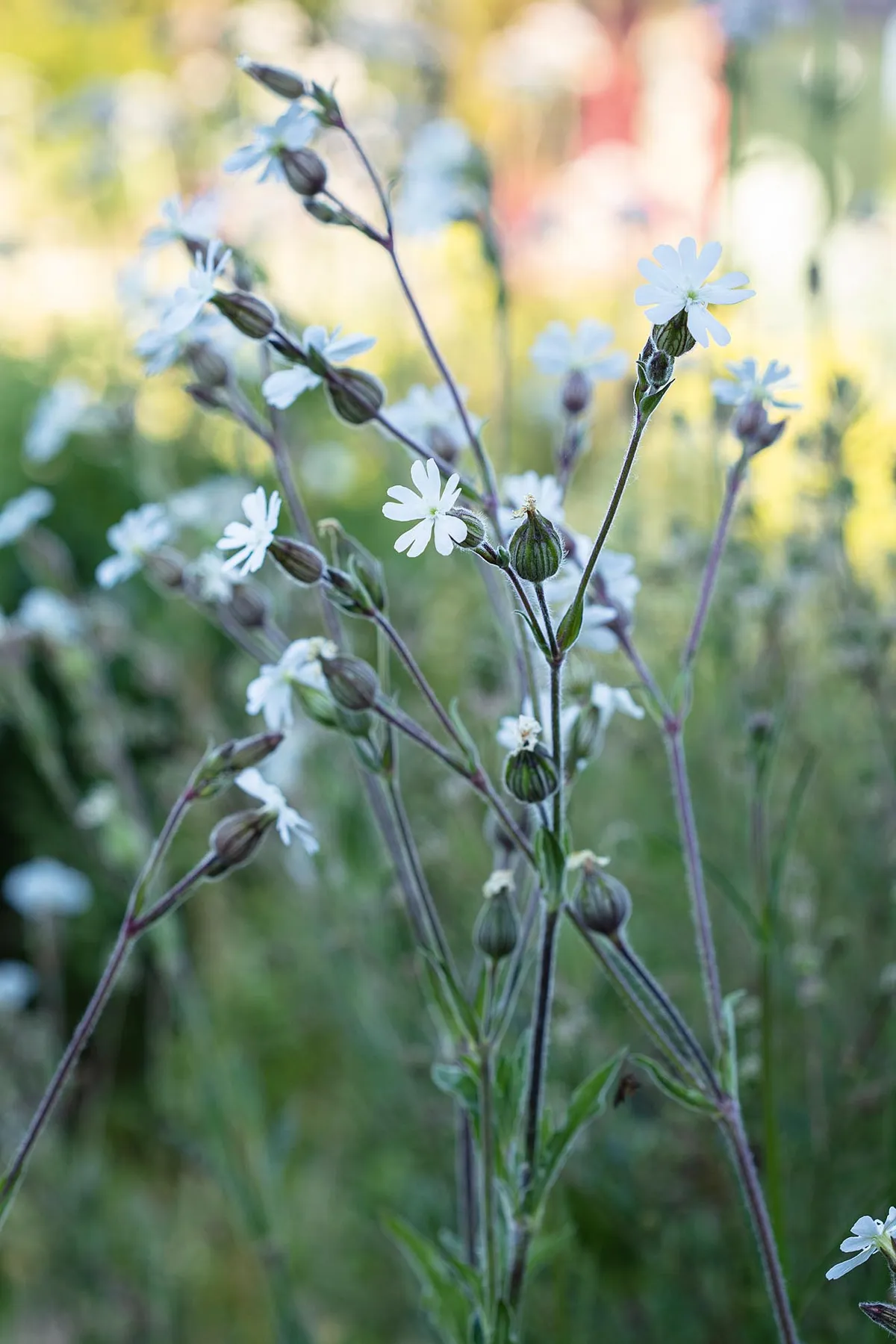
White campion is a typical meadow plant and so looks right at home in this more sophisticated interpretation. The pretty, divided petals are slightly scented. 75cm. RHS H6.
*Holds an Award of Garden Merit from the Royal Horticultural Society. †Hardiness ratings given where available.
Useful Information
Find out more about James’s work at jamesalexandersinclair.com
